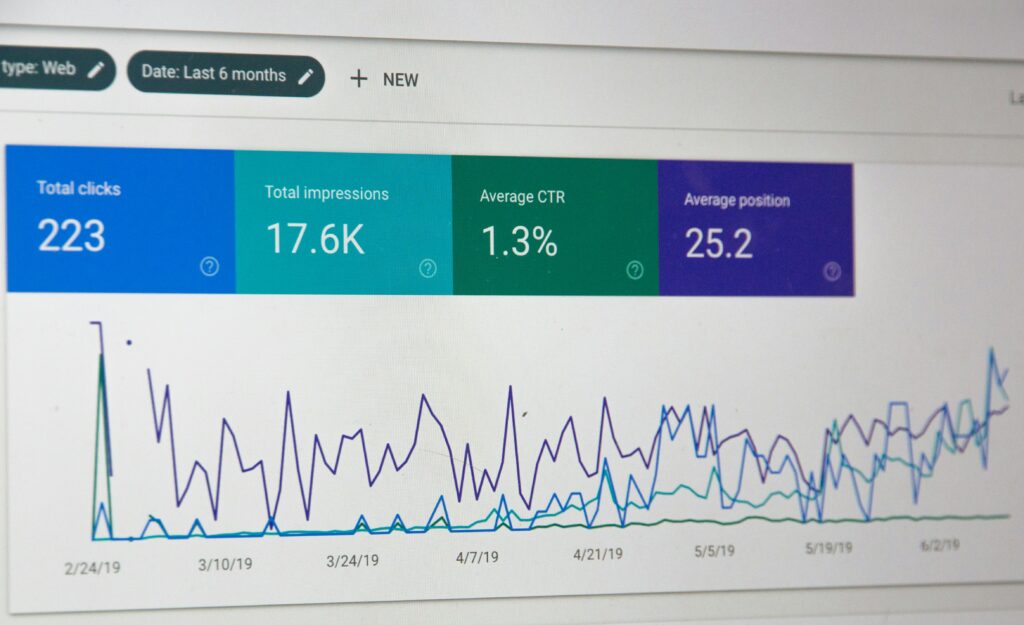Are you curious about how artificial intelligence (AI) is revolutionizing the world of affiliate marketing? Look no further! In this article, we will explore the impact of AI on affiliate marketing and compare it to human intelligence. Discover how AI is transforming the way marketers strategize, analyze data, and manage campaigns. Get ready to unlock the potential of AI and witness its extraordinary influence on the affiliate marketing landscape.

Affiliate Marketing Academy – Get it here
Understanding Artificial Intelligence in Affiliate Marketing
In today’s digital landscape, artificial intelligence (AI) is revolutionizing various industries, and affiliate marketing is no exception. AI refers to the simulation of human intelligence in machines, allowing them to perform tasks that would typically require human cognition. By leveraging AI technologies, affiliate marketers can streamline their processes, enhance customer experiences, optimize campaigns, and improve overall performance. In this article, we will delve into the world of AI in affiliate marketing, exploring its applications, benefits, and future trends.
What is artificial intelligence?
Artificial intelligence encompasses a range of technologies that enable computers and machines to imitate human intelligence. This includes machine learning, where algorithms learn from data and improve their performance over time, as well as natural language processing, which allows machines to understand and interpret human language. AI also encompasses areas such as computer vision, robotics, and expert systems. In the context of affiliate marketing, AI plays a crucial role in automating tasks, analyzing data, and personalizing interactions with customers.
Overview of affiliate marketing
Before we dive into the impact of AI on affiliate marketing, let’s first understand the fundamentals of this powerful marketing strategy. Affiliate marketing is a performance-based marketing model where affiliates promote products or services of a company and earn a commission for each successful referral or sale they generate. Affiliates can be individuals, websites, blogs, or social media influencers. This marketing model is highly cost-effective for businesses, as they only pay affiliates when a desired action is completed. Affiliate marketing has grown exponentially in recent years, with billions of dollars being generated annually.
How artificial intelligence is transforming affiliate marketing
The integration of artificial intelligence in affiliate marketing is enabling marketers to automate various processes, optimize campaigns, and provide personalized experiences to customers. By leveraging AI technologies, marketers can enhance targeting and segmentation, streamline data analysis, optimize content and SEO strategies, improve customer support, and ensure compliance and ethical practices. In the following sections, we will explore in detail how AI is revolutionizing different aspects of affiliate marketing.
Automating Affiliate Programs with AI
AI-powered systems are transforming the way affiliate programs are managed. With AI-driven affiliate tracking systems, marketers can effortlessly track and monitor the performance of affiliates in real-time. These systems provide detailed insights into key metrics such as clicks, conversions, and revenue, allowing marketers to make data-driven decisions. By automating the optimization of affiliate campaigns, AI algorithms can analyze vast amounts of data, identify patterns, and optimize campaigns for maximum performance. This not only saves time and resources but also improves overall campaign ROI. AI-driven affiliate recruitment and management systems offer advanced functionalities such as identifying high-performing affiliates, monitoring their activities, and providing personalized incentives, thus enhancing overall program efficiency. Furthermore, AI plays a vital role in enhancing fraud detection and prevention in affiliate marketing. Machine learning algorithms can analyze different data points, detect anomalies, and quickly identify fraudulent activities, contributing to a safer and more trustworthy affiliate ecosystem.
Affiliate Marketing Academy – Check it out
Improving Targeting and Personalization
One of the most significant benefits of incorporating AI into affiliate marketing is the ability to target customers more accurately and deliver personalized experiences. AI-powered solutions enable advanced customer segmentation, allowing marketers to divide their audience into distinct groups based on various attributes such as demographics, behavior, and preferences. By understanding these segments, marketers can create targeted affiliate campaigns that resonate with each group, resulting in higher conversion rates and customer satisfaction. Predictive analytics, another AI application, allows marketers to forecast customer behaviors and preferences based on historical data, enabling them to tailor affiliate campaigns accordingly. Furthermore, AI technologies enable dynamic pricing and personalized offers, where pricing and promotions are customized based on individual customer profiles. This level of personalization heightens customer engagement, boosts conversions, and fosters long-term customer loyalty. Adding AI into the mix, marketers can create tailored content at scale. Natural language processing algorithms can generate high-quality content that aligns with the preferences and interests of specific audience segments, expanding the reach of affiliate marketing efforts and maximizing engagement.
Enhancing Customer Experience with AI
In the realm of customer experience, AI has a transformative impact on affiliate marketing. Chatbots and virtual assistants are increasingly being used to provide instant and personalized customer support. These AI-powered systems can answer queries, provide product recommendations, and assist in making purchasing decisions at any time of the day. By automating customer interactions, organizations can provide round-the-clock support, improving customer satisfaction and driving conversions. AI-powered recommendation systems are another significant advancement in affiliate marketing. By leveraging vast amounts of data and machine learning algorithms, these systems can analyze customer preferences, browsing history, and purchase patterns to deliver personalized product recommendations. This not only increases the chances of cross-selling and up-selling but also enhances the overall shopping experience. Natural language processing technology enables machines to understand and interpret human language, allowing for personalized interactions. Whether it’s through voice-activated assistants or chat interfaces, AI-powered systems can engage in meaningful conversations with customers, addressing their needs and preferences. Predictive customer behavior modeling is yet another area where artificial intelligence shines. By analyzing past customer interactions and behaviors, predictive models can anticipate customer needs and desires, enabling marketers to provide tailored recommendations and offers that resonate with individual customers.

Leveraging AI for Data Analysis
In the era of big data, AI is instrumental in analyzing and extracting insights from vast amounts of data generated in affiliate marketing. Automated data collection and aggregation systems streamline the process of collecting data from various sources such as websites, social media, and affiliate networks. With AI-based predictive modeling, marketers can leverage historical data to forecast future trends, customer behaviors, and campaign outcomes. This empowers them to make data-driven decisions, optimize strategies, and allocate resources effectively. Real-time analytics, powered by AI, enables marketers to monitor the performance of their affiliate campaigns in real-time, providing instant insights into key metrics such as clicks, conversions, and revenue. This timely information facilitates quicker decision-making, allowing marketers to make necessary adjustments on the fly. Furthermore, AI can help identify profitable niches and trends by analyzing market data and competitor strategies. By uncovering lucrative opportunities, marketers can tailor their affiliate campaigns to target specific niches, maximizing their chances of success.
Optimizing SEO and Content Marketing
AI technologies are revolutionizing search engine optimization (SEO) and content marketing, empowering marketers to reach their target audience more effectively. AI-driven keyword research and optimization tools assist marketers in identifying relevant keywords that drive traffic and conversions. These tools leverage machine learning to analyze search patterns, user intent, and competition, enabling marketers to optimize their content for optimal visibility in search results. Natural language processing algorithms enable machines to generate content that matches human linguistic patterns and preferences. AI-powered content generation platforms can produce high-quality articles, product descriptions, and blog posts effortlessly, saving marketers valuable time and resources. Additionally, AI-powered tools automate content distribution and social media management, enabling marketers to schedule and publish content across various platforms efficiently. By leveraging AI-powered SEO analytics, marketers gain valuable insights into website performance, keyword rankings, and competitor analysis. These insights inform decision-making and help optimize SEO strategies for improved organic visibility and increased traffic.

Utilizing AI for Conversion Optimization
AI plays a pivotal role in optimizing conversions in affiliate marketing. AI-based website optimization and A/B testing platforms enable marketers to test and optimize various elements of their websites, such as layouts, colors, and call-to-action buttons. By analyzing user behavior and preferences, these platforms can make data-driven recommendations to improve website performance and enhance user experience, ultimately leading to higher conversion rates. Personalization and recommendation algorithms leverage AI technologies to deliver personalized content and product recommendations to individual customers. By tailoring the shopping experience to each customer’s preferences, these algorithms significantly increase the chances of conversions. Automated conversion rate optimization tools utilize AI algorithms to analyze user behavior, identify conversion bottlenecks, and provide recommendations to improve conversion rates. Additionally, dynamic pricing and offer optimization, powered by AI, enable marketers to set prices and offers dynamically based on factors such as customer segments, demand, and competitive landscape, maximizing revenue and profitability.
Ensuring Compliance and Ethics with AI
AI technologies play a vital role in ensuring compliance and ethics in affiliate marketing. AI-powered fraud detection and prevention systems analyze vast amounts of data, flag suspicious activities, and quickly identify fraudulent affiliates or transactions. By leveraging machine learning algorithms, these systems continuously learn and adapt to new fraud patterns, protecting businesses and customers from potential losses. Ethical considerations are essential in AI-driven affiliate marketing. Marketers must ensure that AI algorithms and systems are designed and implemented ethically, without any biases or discrimination. Transparency and accountability are crucial, and marketers should provide clear explanations of how AI technologies are used in affiliate marketing. Customers should have the ability to opt-out of AI-driven personalized experiences if they wish, ensuring respect for privacy and individual preferences.
Challenges and Limitations of AI in Affiliate Marketing
While AI brings numerous benefits to affiliate marketing, there are also challenges and limitations that marketers must be aware of. Data privacy and security concerns arise with the implementation of AI technologies, as vast amounts of customer data are collected and processed. It is essential for marketers to prioritize data protection measures and comply with relevant privacy regulations to build trust with customers. Moreover, reliance on AI algorithms poses potential biases in decision-making processes. It is crucial for marketers to regularly evaluate and audit AI models to identify and rectify any biases. Cost and resource implications are also considerations when implementing AI technologies. While AI can bring efficiency and cost-savings in the long run, the initial setup and training of AI systems may require significant investments. Finally, human oversight and intervention remain vital in AI-driven affiliate marketing. Humans should continue to monitor and interpret AI-generated insights and make informed decisions based on their expertise and industry knowledge.
Future Trends in AI and Affiliate Marketing
As AI continues to evolve, the future of affiliate marketing looks promising. Emerging technologies such as augmented reality (AR) and virtual reality (VR) are expected to have a significant impact on affiliate marketing. These technologies will enable marketers to create immersive and personalized experiences, allowing customers to visualize products and make informed purchase decisions. AI-powered voice search and smart devices are also set to play a more prominent role in affiliate marketing. With the growing popularity of voice-activated assistants and smart home devices, marketers must optimize their campaigns to target voice searches and deliver seamless shopping experiences. Additionally, the integration of blockchain technology with AI in affiliate marketing can enhance transparency, security, and accountability. Blockchain can enable marketers to track transactions, verify the authenticity of traffic, and ensure fair commission distribution. By leveraging these emerging technologies, marketers can stay ahead of the curve and create innovative affiliate marketing strategies.
In conclusion, the integration of artificial intelligence in affiliate marketing offers promising opportunities for marketers to streamline processes, enhance customer experiences, optimize campaigns, and drive greater results. By leveraging AI technologies, marketers can automate various tasks, analyze vast amounts of data, personalize interactions, and ensure compliance and ethical practices. While there are challenges to overcome and limitations to consider, the future looks bright for AI in affiliate marketing. As technology continues to advance, it is crucial for marketers to embrace AI and stay updated with emerging trends to leverage its full potential in driving success in affiliate marketing.



































